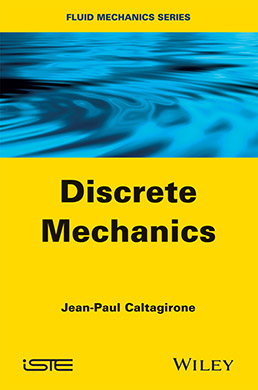
Discrete mechanics is a primitive vision of Newton’s 2nd Law, the fundamental principle of dynamics, as stated in his Philosophiæ Naturalis Principia Mathematica in 1686. The original path chosen to derive the mechanical equations is based on basic concepts of differential geometry where the conservation of the flows is expressed on a segment of the discrete topology. It thus discards the concept of continuous medium.
This book presents the fundamental principle of dynamics, fused together with the conservation of mass equation, which is written formally as the sum of an irrotational contribution and a solenoid contribution following a Hodge–Helmholtz decomposition. The gradient of the scalar potential is associated with pressure forces whereas the rotational of the vector potential corresponds to viscous forces. The discrete equation of the motion thus obtained brings together, at the first order, phenomena such as the diffusion of the quantity of motion, wave propagation, viscous or wave dissipation, etc. The single formulation for fluids and solids is exempt from any constitutive law.
1. Framework of Discrete Mechanics.
2. Momentum Conservation.
3. Conservation of Heat Flux and Energy.
4. Properties of Discrete Equations.
5. Multiphysics.
Jean-Paul Caltagirone is Professor at the University of Bordeaux in France. He conducts research into fluid mechanics, heat transfers and porous media in which he develops original numerical methodologies to resolve equations.